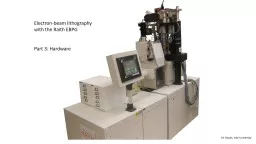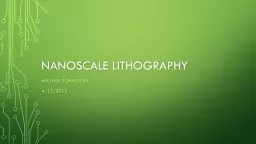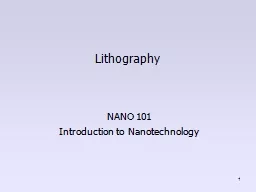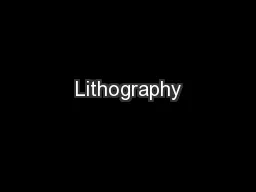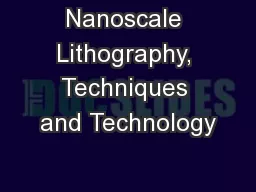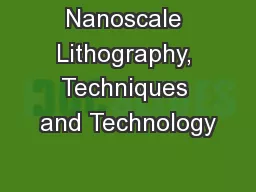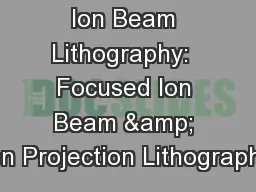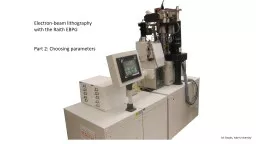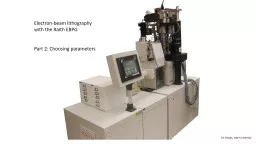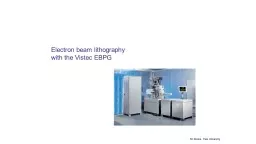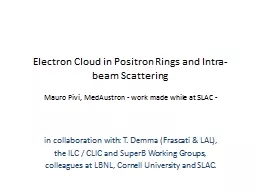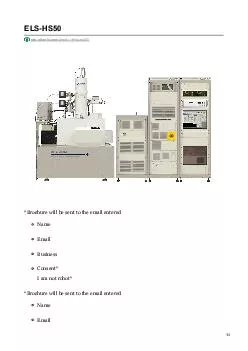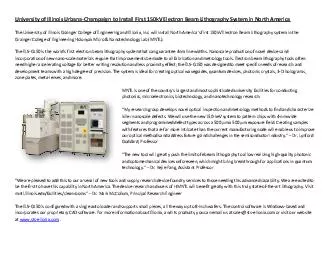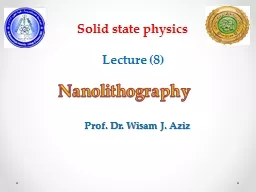PPT-Electron-beam lithography
Author : tatiana-dople | Published Date : 2018-03-10
with the Raith EBPG Part 3 Hardware M Rooks Yale University EBPG 5000 System Hardware 100 kV accelerating potential electrons of course 20 bit main field DAC Digital
Presentation Embed Code
Download Presentation
Download Presentation The PPT/PDF document "Electron-beam lithography" is the property of its rightful owner. Permission is granted to download and print the materials on this website for personal, non-commercial use only, and to display it on your personal computer provided you do not modify the materials and that you retain all copyright notices contained in the materials. By downloading content from our website, you accept the terms of this agreement.
Electron-beam lithography: Transcript
Download Rules Of Document
"Electron-beam lithography"The content belongs to its owner. You may download and print it for personal use, without modification, and keep all copyright notices. By downloading, you agree to these terms.
Related Documents

